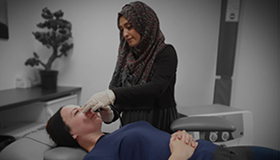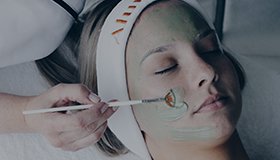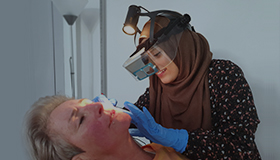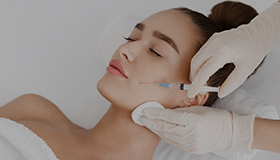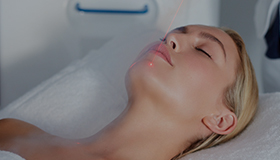Pigmentation
Uneven skin pigmentation (or hyperpigmentation as it is often known) is a common skin complaint. Dark spots – known as age spots or sunspots – or dark patches of skin frequently appear on the face, hands and other parts of the body regularly exposed to the sun. This article outlines the different types of hyperpigmentation and explains what causes them. We look at how you can help prevent hyperpigmentation in the first place, as well as steps you can take to reduce dark spots or patches once they have formed.
PIGMENTATION CAN BE HELPED WITH: (WHICH TREATMENTS):
SYMPTOMS OF PIGMENTATION
From sunspots to melasma, pigmentation is a skin condition in which overproduction of melanin causes brown or grey patches to develop on the skin. Pigmentation mainly affects the face (cheeks, forehead, nose, and jawline). It is possible for age or sunspots to develop in other areas including hands, forearms, neck and chest.
Generally, pigmentation becomes more apparent in the summer months, easing in the winter, with it darkening in response to sun exposure. Age or sunspots, hyperpigmentation, melasma and other conditions of this kind are benign and do not pose a risk to health but can be quite distressing.
CAUSES OF PIGMENTATION
Hyperpigmentation is the term used to describe areas on uneven pigmentation in skin. Hyperpigmentation appears as darkened patches or spots on the skin that make skin look uneven. The spots are known as age spots or sunspots and hyperpigmentation is also at the heart of skin conditions such as melasma and post-inflammatory hyperpigmentation. People with dark skin are normally more affected by hyperpigmentation marks than those with a lighter skin tone as skin pigmentation is stronger in dark skin. Pigment spots such as age spots (which are also known as sunspots) are caused by sun exposure. For this reason, they appear mainly on body parts that are frequently exposed such as the face, neck, décolleté, hands and arms. They tend to be small, darkened patches of skin.
Also known as chloasma, melasma is a condition where larger patches of hyperpigmentation develop mainly on the face. Although it can affect both men and women, melasma is most common in women and is thought to be triggered by changes in hormone levels.
PREVENTION OF PIGMENTATION
You can prevent future pigmentation and sun damage by:
- Always using a UVA and UVB shielding sunscreen, even on a cloudy day.
- Using products with antioxidant ingredients.
- Avoiding prolonged periods of sun exposure.
- Adding a brightening product designed to tackle pigmentation to your skincare regime. Making it the first product you use after cleansing and toning day and night can help turn back time.
- Avoiding products using harsh alcohol such as old-style toners and highly fragranced products.
BOOK A COMPLIMENTARY CONSULTATION
TESTIMONIALS
Have tried several clinics around Bristol ,all the well known ones but this is the best one ! Would recommend and will definitely be going back.
Best experience! Everyone was very friendly and have already seen a vast improvement to my skin after one treatment.
I had a facial peel this evening with Kiswa. What a lovely experience, professional, relaxing and my skin feels fantastic. I’ll definitely be back.
Thank a lot…you are the best… Highly recommend…
Would definately recommend! Highly professional… Great results too. 👍 Will be going back for sure!!
POPULAR TREATMENTS AT DERMALOGIC AESTHETICS















